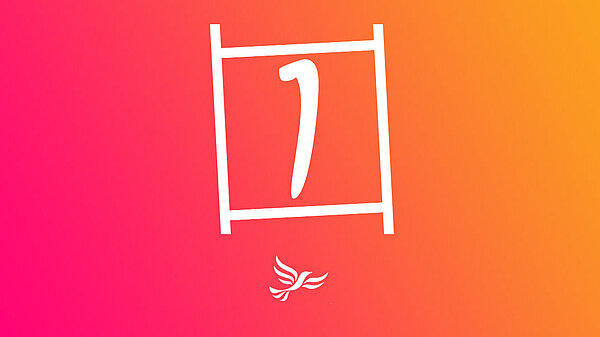Internal Elections
Find out what elections are happening now, how you can stand and how you can nominate others to stand.
Our party is run by members, for members. Whether it's our leader, members of Federal Committees or the teams that run your local party, everyone is elected by fellow members.
The last Federal Election was run in 2022. The next Federal Elections will take place in the latter part of 2025.
Internal Federal Elections 2025 Results
Please click on the links to view the full count results for each of the elections held this year.
Federal Party autumn elections 2025
The Federal Board has agreed the following timetable and President/Vice President spending limit for the Autumn 2025 elections.
Election Regulation #6 states:
The Federal Board shall agree and publicise a timetable for each election, including the publication of the notice of elections, the deadlines to be used for the opening and closing of nominations, submission of candidates’ manifestos, despatch and return of ballot papers, and the date for the counting of votes … the Federal Board shall where practicable agree and publicise the timetable no later than the spring conference before the elections are due.
| Publication of Notice of Elections | Monday 11 August | |
| Bank holiday | Monday 25 August | |
| Opening of Nominations | President / VP | Tuesday 26 August (1200) |
| Committees and Councillor reps | Monday 8 September (1200) | |
| Party Conference | Friday 19 – Tuesday 23 September | |
| Close of Nominations | All positions | Wednesday 24 September (1800) |
| Deadline for Submission of Manifestos | All positions | Tuesday 30 September (1700) |
| Despatch of Ballot Papers | Tuesday 28 October (1300) | |
| Deadline for Return of Ballot Papers | Paper | Monday 10 November (1400) |
| E-vote | Tuesday 11 November (1400) | |
| Counting of votes and Declaration of Results | Wednesday 12 November |
Election Regulation #41 states:
For the elections for the Leader, President and Vice President of the Liberal Democrats: The Federal Board shall set a spending limit for election expenses, not including travel or subsistence, for each candidate, when they set the timetable for the election.
The Federal Board have set the limit for the 2025 President and Vice President elections at £20,000.
Candidates and Manifestos
Nominations closed on Wednesday 24 September at 18:00.
Candidates who have been validly nominated are shown below. Where a manifesto has been received from a candidate, it is linked below.
-
- Aaron Williams
- Abrial Jerram
- Adrian Hyyrylainen-Trett
- Aidan Van de Weyer
- Alison Jenner
- Andrew Brown
- April Preston
- Archie McCann
- Candy Piercy
- Caroline Leaver
- Caron Lindsay
- Charles Edward Lord
- Charley Hasted
- David Barnsdale
- David Buxton
- David Vigar
- Dominic Martin
- Donna Harris
- Edna Murphy
- Edward Sainsbury
- Elizabeth Jewkes
- Fraser Graham
- Gareth Roberts
- Hannah Perkin
- Humaira Sanders
- Ian Franks
- James Baillie
- Janice Turner
- Jenny Shorten
- Jenny Wilkinson
- Joe Toovey
- John White
- Josh Lucas Mitte
- Keith Moffit
- Mark Johnston
- Matt Downey
- Natalie Bird
- Nichola Martin
- Rachel Barker
- Richard Cole
- Richard Flowers
- S. R. Forster
- Sarah Cheung Johnson
- Simon McGrath
- Sudhakar Achwal
- Teresa Cooper
- Toby Keynes
- Victor Chamberlain
-
- Abrial Jerram
- Alison Eden
- Alyssa Gilbert
- Andrew Duffield
- Andrew Haldane
- Antony Hook
- Brandon Masih
- Carolyn Cobbold
- Chris Bowers
- Duncan Brack
- Edward Molyneux
- Elizabeth Jewkes
- Graham Neale
- Humaira Sanders
- Imad Ahmed
- Jacob Sinkins
- James Baillie
- Janice Turner
- Jeremy Hargreaves
- Jim Williams
- John Shreeve
- Jonathan Everett
- Josh Matthews
- Katie Mansfield
- Keith Melton
- Laura Gordon
- Lucy Nethsingha
- Marc Hadley
- Marcus Foster
- Martin Horwood
- Michael Berwick-Gooding
- Mohsin Khan
- Nick Harvey
- Phil Bennion
- Rebecca Jones
- Richard Cole
- Rory Clark
- Rosie Shimell
- S. R. Forster
- Sarah Dobson
- Simon McGrath
- Steve Mason
- Thalia Marrington
- Tushar Aneja
- Ulysse Abbate
- Zoe Hollowood
-
- Alex Davies
- Alison Jenner
- Ben Rich
- Callum Robertson
- Charley Hasted
- Chris Adams
- Chris Maines
- Christopher Johnson
- Dionne Daniel
- Eleanor Kelly
- Fraser Graham
- Gareth Epps
- Hannah Kitching
- Helen Cross
- Jacqui Morley
- James Gurling
- Jed Marson
- Jennie Rigg
- Jess Brown-Fuller
- Joe Toovey
- Jon Ball
- Julie Adnams Hatch
- Kath Pinnock
- Lucas North
- Max Wilkinson
- Nick da Costa
- Paul McGarry
- Richard Kilpatrick
- Roderick Lynch
- Sam Barratt
- Sandra Gidley
- Sarah Teather
- Sean Bennett
- Shaffaq Mohammed
- Simon Lepori
- Teresa Cooper
-
- Adrian Hyyrylainen-Trett
- Alessandra Rossetti
- Ann Keeling
- Anna Fryer
- Antoine Godbert
- Arthur Wu
- Chloe Hutchinson
- Christopher Johnson
- David Chalmers
- Doreen Huddart
- Eleanor Kelly
- Eleanor Rylance
- Gabriela Ferguson
- Hannah Bettsworth
- Helen Belcher
- Irina von Wiese
- Jacqueline Bell
- Keith Melton
- Natalie Bird
- Phil Bennion
- Rowan Fitton
Regulations and Guidance
Following the delay of the counts for the Committee positions on 12 November 2025, the Returning Officer and the Federal Party have sought legal advice from a second King's Counsel (KC) who specialises in election law and discrimination cases. We asked them to review the Federal Appeals Panel judgement about the internal elections and recommend how to proceed at a detailed operational level.
The KC advice is that, in light of the Supreme Court judgement and our Federal Appeals Panel judgement, we must suspend rule 2.5 and rule 2.6(c) in the Federal Constitution for these counts.
We will now arrange with Civica Elections Services for the count to take place as soon as possible. The date will now depend on their team’s availability.
The Returning Officer Team would like to extend its gratitude to everyone for bearing with us through this process. It has been important that we get this right, both to ensure the results are fair and to protect the party from potential legal risks.
Election Results
Archive of results from 1988 to the present day
You can find all of the historic Federal Election results here.


